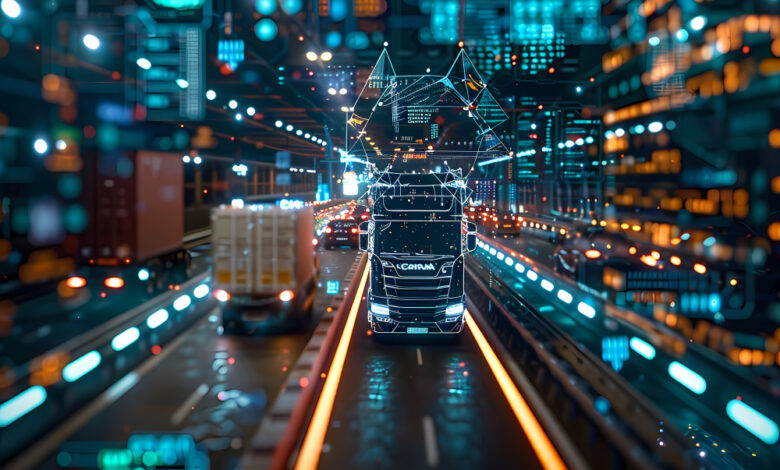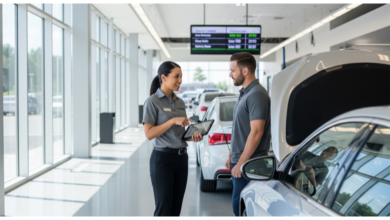
Cities across the country are deploying AI-driven adaptive traffic signals, connected sensors, and real-time monitoring systems to improve how people move. Des Moines is no exception. Artificial intelligence is helping the city make better use of data — predicting congestion, optimizing light cycles, and improving emergency response times. Smart traffic systems promise reduced congestion, fewer crashes, and a smoother daily commute.
But as these technologies roll out, a critical question emerges: will every neighborhood benefit equally, or will improvements cluster in areas that already have stronger infrastructure? True progress requires that smart traffic systems advance both efficiency and equity, ensuring that modernization improves mobility for all residents, not only those in high-traffic corridors.
The Current State of Traffic in Des Moines
Traffic in Des Moines is shaped by a mix of dense downtown corridors, suburban arterial roads, and residential streets with varying levels of infrastructure investment. Peak-hour congestion often builds on major commuter routes, while local neighborhoods may struggle with speeding, unsafe crossings, or outdated signal timing.
Upgrades to traffic systems have usually focused on locations with the highest traffic volumes, but this pattern risks leaving quieter neighborhoods behind. At the same time, Des Moines has set ambitious goals for safety and sustainability, including reducing accidents and preparing for long-term shifts in mobility. According to the U.S. Department of Energy’s “Fact of the Week,” the average annual delay per commuter was 54 hours in 2022.
Significant investments in AI-powered traffic signal modernization are already underway. These projects represent meaningful progress, yet they also expose an imbalance: improvements tend to cluster in a limited number of corridors, while neighborhoods with persistent safety concerns sometimes see little change.
Why Equity in Transportation Matters
Transportation equity means that the benefits of new technology are distributed fairly across communities, rather than concentrated in only a few areas. Equity requires considering not just efficiency for drivers but also safety and accessibility for pedestrians, cyclists, and public transit users.
Without an equity lens, even AI-based smart traffic systems can unintentionally widen existing gaps. For example:
- A major intersection may receive adaptive signals while nearby residential streets continue to face suboptimal crossing conditions.
- Pedestrians in underserved areas may wait longer at outdated signals, even though those neighborhoods experience higher crash rates.
- Emergency response vehicles may navigate efficiently through modernized corridors while delays persist in other parts of the city.
Equity also affects public trust. If residents perceive that investments flow only to well-traveled areas, confidence in city planning diminishes. A system that visibly improves safety and access across many neighborhoods fosters stronger community support — and demonstrates that AI can be used responsibly for public benefit.
Local Lessons on Infrastructure and Policy
Infrastructure redesigns in Des Moines have shown that pairing roadway changes with traffic management improvements can significantly reduce crash risks. These results underscore the importance of approaching safety holistically, not just through technology but also through street design, pedestrian infrastructure, and policy.
Ensuring equal access to justice is part of equity in transportation. Those affected by unsafe intersections should feel empowered to reach out to an Iowa car accident lawyer who can explain available options.
Policy decisions also play a key role in shaping how smart traffic is deployed. For example, debates about AI-assisted speed enforcement highlight the tension between safety, privacy, and fairness.
When decisions lean heavily toward one perspective, they risk neglecting the voices of communities most affected by unsafe roads. Together, these lessons show that smart traffic cannot be separated from broader planning and governance choices.
Pathways Toward Equitable Smart Traffic
To build a transportation system that serves every neighborhood, Des Moines must deliberately embed equity in planning and execution. Key pathways include:
- Inclusive Planning – Invite residents from diverse neighborhoods into decision-making processes. Local knowledge often reveals problems — such as dangerous crossings or unreliable bus corridors — that raw traffic counts overlook.
- Data-Driven Targeting – Prioritize upgrades in areas with high crash risks, frequent pedestrian use, or long travel delays, rather than only the busiest vehicle corridors. This ensures that investments respond to need, not just volume.
- Multimodal Safety – Expand smart traffic features beyond vehicle flow. Adaptive crosswalks, pedestrian countdown signals, and signal priority for public transit all extend the benefits of technology to non-drivers.
- Accessibility for All – Ensure that systems serve residents with disabilities, older adults, and those who rely on walking or transit as their primary means of mobility.
- Balanced Funding – Allocate resources in a way that pairs large-scale modernization with smaller neighborhood-level projects. A single high-profile corridor upgrade should not come at the expense of dozens of smaller but urgent improvements.
Benefits of an Equity-First Approach
When equity is embedded in smart traffic planning, the benefits extend far beyond smoother commutes. Neighborhoods across the city experience measurable safety improvements, not just those near downtown or major arterials.
Pedestrians and cyclists gain safer routes, supporting healthier and more sustainable modes of travel. Transit reliability improves, making the system more attractive and efficient for riders.
Equity-first planning also strengthens resilience. Cities grow and change, and systems designed with inclusivity adapt more easily to demographic shifts, new mobility technologies, and changing patterns of travel. Coordinated signal systems, although not fully adaptive, have produced up to 30% reductions in travel times in Virginia study corridors.
Equitable distribution of benefits builds trust in public investment, creating momentum for further modernization. By aligning equity with safety and efficiency, Des Moines positions itself to achieve its long-term mobility and sustainability goals.
Conclusion
Des Moines stands at an important moment in its transportation planning. Investments in smart traffic systems will shape mobility for decades to come. But modernization without equity risks reinforcing existing disparities. Every neighborhood — whether it lies in the city center or on the periphery — deserves access to safer streets, reliable crossings, and efficient mobility.
The path forward requires deliberate choices: involving communities in planning, directing resources to where safety risks are highest, and designing systems that serve drivers, cyclists, pedestrians, and transit riders alike. By embedding both AI and equity into smart traffic implementation, Des Moines can create a transportation network that delivers safety, efficiency, and fairness across the entire city.





